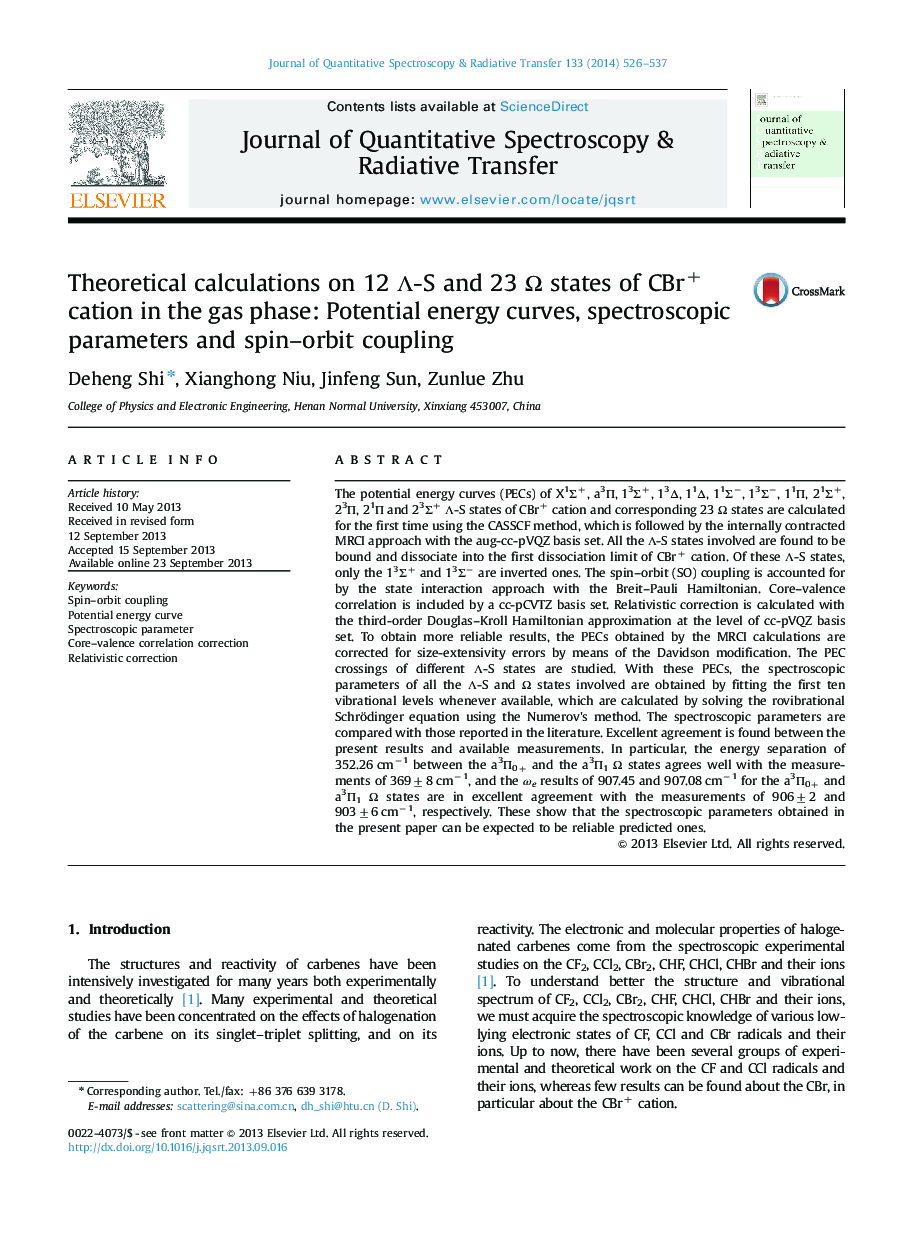| Article ID | Journal | Published Year | Pages | File Type |
|---|---|---|---|---|
| 5428509 | Journal of Quantitative Spectroscopy and Radiative Transfer | 2014 | 12 Pages |
â¢Spectroscopic parameters of 12 Î-S and 23 Ω states are calculated.â¢Effect of core-valence correlation and relativistic corrections on the PECs is included.â¢Convergent behavior of present calculations is discussed.â¢PEC crossings of different Î-S states are studied.â¢Effect of SO coupling on the spectroscopic parameters is evaluated.
The potential energy curves (PECs) of X1Σ+, a3Î , 13Σ+, 13Î, 11Î, 11Σâ, 13Σâ, 11Î , 21Σ+, 23Î , 21Î and 23Σ+ Î-S states of CBr+ cation and corresponding 23 Ω states are calculated for the first time using the CASSCF method, which is followed by the internally contracted MRCI approach with the aug-cc-pVQZ basis set. All the Î-S states involved are found to be bound and dissociate into the first dissociation limit of CBr+ cation. Of these Î-S states, only the 13Σ+ and 13Σâ are inverted ones. The spin-orbit (SO) coupling is accounted for by the state interaction approach with the Breit-Pauli Hamiltonian. Core-valence correlation is included by a cc-pCVTZ basis set. Relativistic correction is calculated with the third-order Douglas-Kroll Hamiltonian approximation at the level of cc-pVQZ basis set. To obtain more reliable results, the PECs obtained by the MRCI calculations are corrected for size-extensivity errors by means of the Davidson modification. The PEC crossings of different Î-S states are studied. With these PECs, the spectroscopic parameters of all the Î-S and Ω states involved are obtained by fitting the first ten vibrational levels whenever available, which are calculated by solving the rovibrational Schrödinger equation using the Numerov's method. The spectroscopic parameters are compared with those reported in the literature. Excellent agreement is found between the present results and available measurements. In particular, the energy separation of 352.26 cmâ1 between the a3Î 0+ and the a3Î 1 Ω states agrees well with the measurements of 369±8 cmâ1, and the Ïe results of 907.45 and 907.08 cmâ1 for the a3Î 0+ and a3Î 1 Ω states are in excellent agreement with the measurements of 906±2 and 903±6 cmâ1, respectively. These show that the spectroscopic parameters obtained in the present paper can be expected to be reliable predicted ones.
